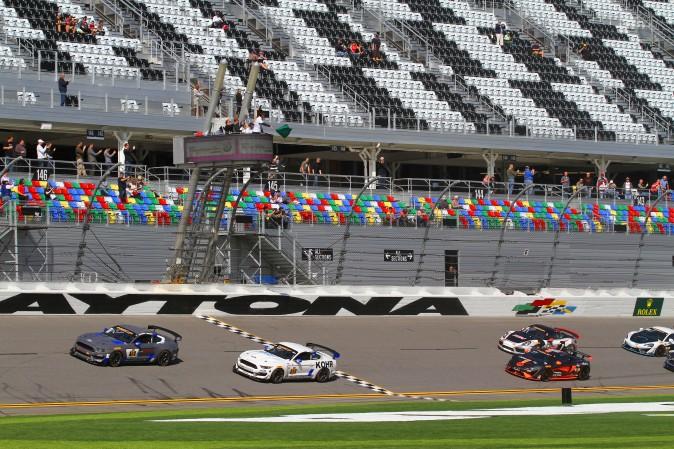DAYTONA BEACH, Fla.—Trent Hindman and Cameron Cassels drove their #12 Bodymotion Racing
Porsche Cayman GT4 from 16th place on the starting grid to victory in the season-opening IMSA CTSCC BMW Endurance Challenge at Daytona Friday, Jan. 27.
Hindman and Cassels led a Porsche parade–the top four finishers drove Cayman GT4s; six of the top ten finishers drove Porsches. Porsche also scored three of the top four spots in Sport Tuner.

The start of the IMSA CTSCC BMW Endurance Challenge at Daytona, Friday, Jan. 27, 2017. Chris Jasurek/Epoch Times





